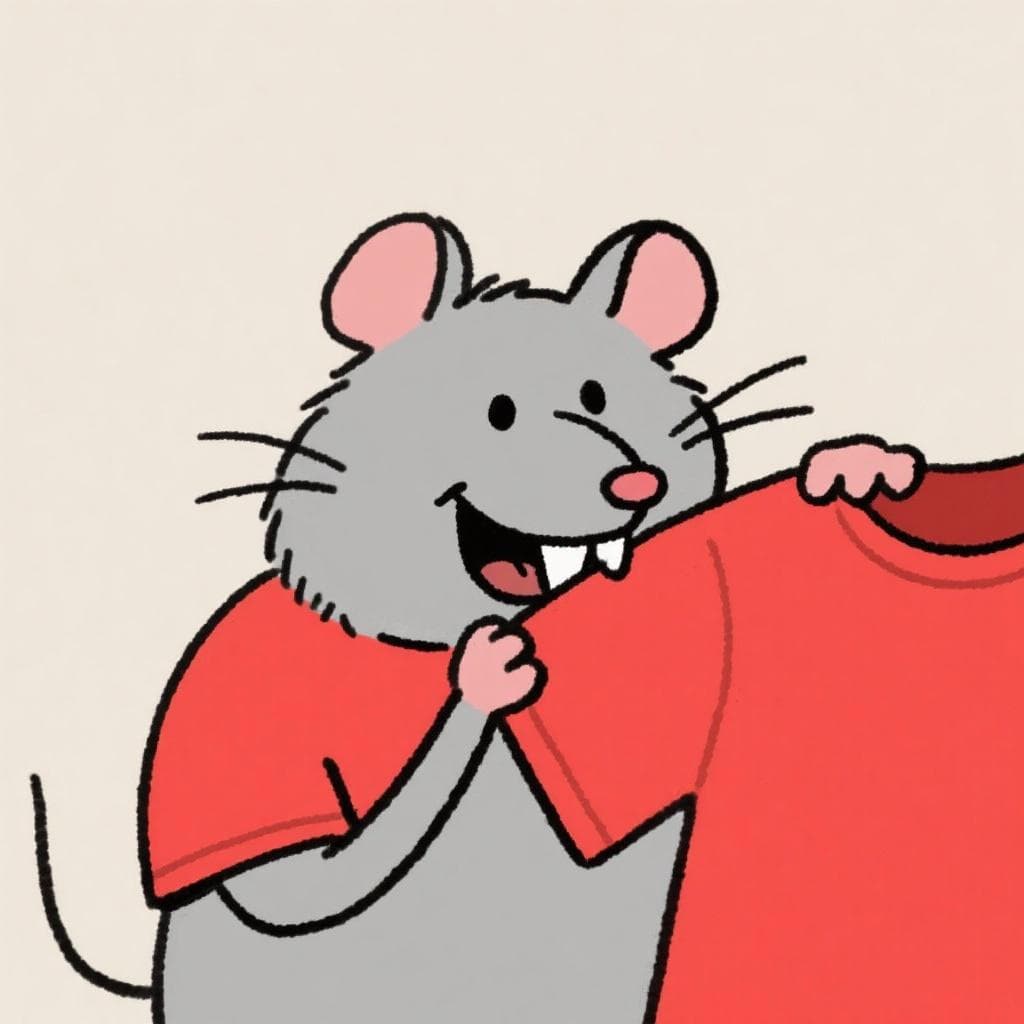La rata roe la ropa.
la RA-ta RO-e la RO-pa
The rat gnaws the clothes.
🔊 Listen & Practice
Start with slow speed to master pronunciation, then gradually increase to challenge yourself.
🎨 Visualization

This cheeky rat is ruining someone's laundry! Let's practice that rolled 'rr' sound.
🎯 Pronunciation Focus
The Rolled 'rr' (vibrante múltiple)
/r/This is the star of the show! In Spanish, an 'r' at the beginning of a word (like in 'rata', 'roe', 'ropa') is always pronounced with a strong, vibrating roll. It's the same sound as the 'rr' in 'perro'.
Pure Vowels 'o' and 'a'
/a/, /o/Notice the repetition of 'a' and 'o'. Spanish vowels are quick and pure. Unlike the English 'o' in 'go', the Spanish 'o' is a short, crisp sound. Same for the 'a', which is always an 'ah' sound like in 'father'.
📝 Practice Breakdown
Let's start here. The 'r' in 'rata' needs to be a strong roll. Place the tip of your tongue just behind your top teeth and blow air to make it vibrate. RA-TA.
Now for the next two. 'Roe' and 'ropa' get the exact same rolled 'r' sound as 'rata'. Practice them slowly: RO-E... RO-PA. Then put it all together.
Key Words in This Tongue Twister:
📚 Background
This is a fundamental 'trabalenguas' for every Spanish learner. It's short, simple, and perfectly designed to train one of the most iconic sounds in the language: the rolled 'rr'. It's often one of the first tongue twisters Spanish-speaking children learn.
❌ Common Pitfalls
Using the English 'r'
Mistake: "Pronouncing 'rata' with the 'r' from the back of the throat, like in the English word 'rat'."
Correction: The Spanish 'r' is made at the front of your mouth. The tip of your tongue needs to vibrate against the ridge behind your top teeth (the alveolar ridge). It's a completely different muscle movement!
Using a Single Tap Instead of a Roll
Mistake: "Making the 'r' sound too soft, like the 'r' in 'caro' (expensive)."
Correction: Remember the rule: an 'r' at the start of a word is ALWAYS rolled. You need to push more air to create a sustained vibration, not just a single, quick tap.
🌎 Where It's Used
General Spanish
This tongue twister is universally known and used across the entire Spanish-speaking world as a basic pronunciation drill.
🔗 Related Tongue Twisters
The Rat Race Challenge
Can you say it five times in a row without stopping? Start slow to keep the 'r's strong, then build up speed. Record yourself and listen for that vibration!
🏷️ Tags
Frequently Asked Questions
Why is the single 'r' in 'rata' pronounced like a double 'rr'?
Great question! It's a core rule in Spanish pronunciation: any time a word begins with the letter 'r', it is automatically pronounced with the strong, rolled 'rr' sound. You just have to remember the rule; the spelling doesn't change.
I physically can't roll my 'r's. What should I do?
Don't give up! It's a physical skill like learning to whistle. Many people struggle at first. A great drill is to say the English words 'butter' or 'ladder' very quickly. The 'dd' or 'tt' sound is made in the exact same spot as the Spanish tap 'r'. Start there to get the feel of the tongue tap, then practice pushing more air to try and create a roll.

